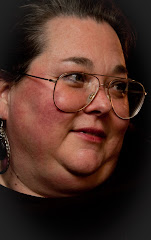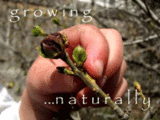 by Rod
by RodThis is the stew I have been trying to make for the past couple of months, I finally got it right, so I'm sharing...
Start with a large, solid saucepan (I used my cast iron dutch oven).
Drop a good dollop (3 or 4 tablespoons)of coconut oil in the pan on low heat (can use beef dripping or lard here.)
If you're like me and didn't think about this until 5 pm, grab a pound of diced stewing steak from the freezer and drop it into the hot oil. If you have fresh steak (or thawed) all the better. It just won't take as long to brown. DO NOT TURN THE HEAT UP!!. It will cook on low heat just fine.
Once your meat is mostly thawed and in various stages of being cooked, slice a medium sized onion and throw it in.
Give it a thorough stir and then leave it alone.
Find a few cloves of garlic (4 or 6..or more if you really like garlic) and mince them directly into the pot. Leave the heat alone, it will cook just fine.
If you have bone broth in your freezer, plop a 1 cup puck on top of the meat and onions. and yes, leave the heat alone, it will melt all by itself.
If you lack bone broth you can use stock cubes, but please make up the stock in a cup of liquid and pour the liquid stock into the pot. (dropping plain water into the pot will wash the flavor out of your meat, this is a huge no-no).
Add a good long splash of soy sauce, I'm gonna say its at least a tablespoon, but its probably more like two.
Throw in a tablespoon or so of red pepper flakes.
Add a good shake of nutmeg, a teaspoon or two I guess.
(a bay leaf or two wouldn't go astray here, I just forgot with this particular stew.)
Pop the top on a passable quality bottle of red, I used 3-buck-chuck Shiraz(gotta love Trader Joe's... if your in Australia, Seven Hill make a good quality, low price Shiraz). Pour a cup or so into the pot.
Give it a thorough stir, drop a loose fitting lid on it , and leave it alone for about 45 minutes.
Put several cups of water (or vegetable water from your last steamed vegetable meal) in the bottom of a steamer, drop a couple of good sized chopped potatoes in there. In your steamer basket, place some squash and rutabaga and maybe some sweet potato or anything else that's chunky and wholesome. Make sure you have at least 3 pounds of vegetables in total, 4 is better. Steam until tender.
Check the meat, it should be getting tender.
(if you are going to add frozen vegetables, now (as the meat becomes tender) is the time to do it, add these to the meat pot)
In a smallish skillet, warm a good chunk of beef dripping on low heat, (probably 3 tablespoons), once its melted and getting warm, add a quarter cup of flour (I use whole wheat, freshly ground) and a tablespoon or two of soy sauce. Stir the flour until it is coated with oil and starting to brown. Time to get busy….
Put the steamed vegies in with the meat. Stir it up.
Add a cup or so of liquid from the steamer into the gravy skillet.
Mix the gravy until it is thick and gooey.
Add the thick gooey gravy to the pot. Pour on the remaining steamer liquid and the potatoes (if they haven't already gone into the pot) Stir it in thoroughly so that they gravy is uniform, and turn the heat off.
Go and set the table, dinner will be ready in 5 minutes. Give the pot a stir every minute or so until you serve.
The advantage to this preparation is that the meat has only ever been in contact with highly flavorful liquid, right up until the last few minutes.
The effect is that every morsel of meat is a parcel of wonderful flavor that makes them the most highly prized morsels in the meal. The rich meat sauce lends a healthy hearty flavor to the gravy, and the other vegetables retain their own flavors.
The low heat cooking means that the onions and garlic lend all of their sugars to the sauce, which are enhanced by the soy sauce and wine.
Try, experiment, enjoy!!
Take Care
Rod
Ingredients list
Coconut oil and/or beef dripping or lard (you'll use a quarter pound or less all up )
1 pound of diced stewing steak
1 medium onion
1 half head of Garlic
1 cup bone broth (or one cup strong flavored stock)
Nutmeg
Red pepper flakes
Red wine (about a cup)
Soy Sauce
(try a bay leaf or two... any other herb that you fancy, all optional)
Water (or vegetable water saved from previous cooking, or vegetable broth)
2 pounds potatoes,
1 pound rutabaga
1 pound squash
(can substitute any chunky vegetable here)
1/4 cup flour for the gravy




















